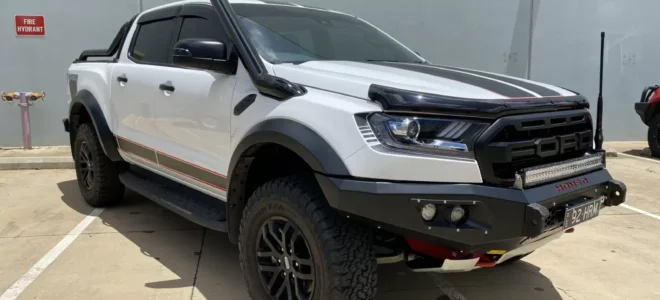Embarking on an off-road adventure with your trusty 4×4 is a thrill-seeker’s dream, promising adrenaline-pumping experiences and breathtaking scenery. Yet, as any seasoned off-roader knows, there are times when you’ll encounter water crossings that demand more than just a heavy foot on the accelerator.
Whether it’s a gently flowing stream or a more formidable river, the allure of conquering these aquatic obstacles adds excitement to the journey.
In this guide, we’ll delve into the five indispensable pieces of gear that every off-roader should have on hand to ensure a safe and successful foray into water crossings.
Recovery Equipment for Unexpected Situations
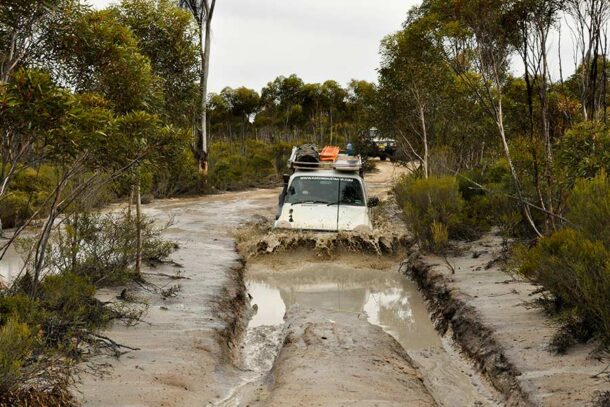
Source: snowys.com.au
Water crossings can be highly unpredictable. Even seemingly shallow water can hide sudden drop-offs or obstacles. Recovery equipment ensures you’re ready for unforeseen challenges.
Here are typical examples of recovery equipment:
- Tow Straps and Recovery Ropes – These are essential for connecting vehicles or securing anchor points for winching or pulling.
- Winch – A winch is a powerful tool that uses a cable or rope wound around a drum to pull vehicles out of challenging situations.
- Traction Boards/Mats – These provide extra grip for tires in soft or slippery terrains.
- Shackles and D-rings – These things attach recovery equipment to anchor points on your vehicle.
- High-Lift Jack – This versatile tool is perfect for lifting, winching, and clamping, making it invaluable for various recovery scenarios.
Invest in high-quality, durable equipment from reputable brands or stores like ARB Melton. Doing so ensures reliability when you need it most.
Moreover, a well-organized storage system for recovery equipment is paramount. Ensuring these tools are readily accessible within your vehicle can significantly affect time-sensitive recovery situations. Proper stowage also minimizes the risk of loose equipment becoming hazardous projectiles during sudden stops or maneuvers.
Snorkel Kit for Engine Protection
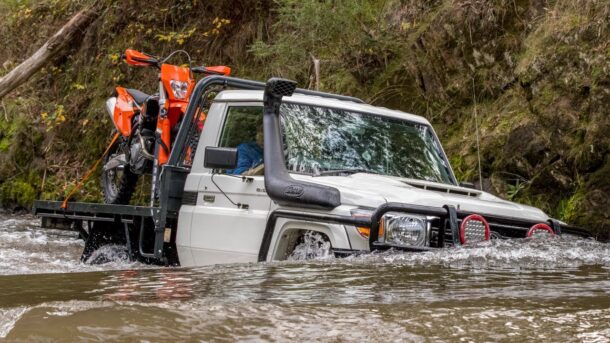
The snorkel kit acts as an elevated breathing apparatus for your 4×4 vehicle, drawing air from a higher, safer point than the standard air intake. It shields the engine from water intrusion during river crossings and other wet conditions.
This ingenious design ensures that only clean, dry air is fed into the engine, preventing catastrophic damage when water infiltrates critical components.
Airtight seals and precise positioning are paramount when installing a snorkel kit. Any gaps or misalignments in the installation process could compromise effectiveness, leaving your engine vulnerable.
Therefore, it’s best to have a professional install it to ensure a secure fit and correct alignment.
Moreover, selecting the appropriate snorkel for your 4×4 involves considering several crucial factors. These include your vehicle’s specific make and model, the engine it houses, and the prevailing driving conditions you anticipate encountering.
Additionally, researching reputable snorkel brands known for their quality and durability is a prudent step toward securing the best protection for your engine during water crossings.
Waterproofing and Sealing Solutions
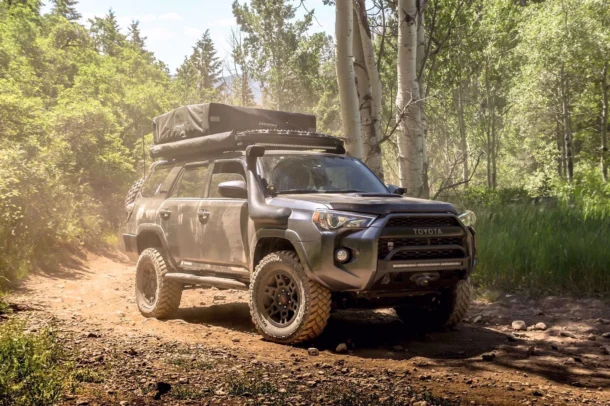
Source: alldogsoffroad.com
Water infiltrations can lead to various issues, from minor electrical glitches to severe, long-lasting damage. Corrosion of electrical connections, short circuits, and even compromised structural integrity are all potential consequences of prolonged water exposure.
Various specialized products protect your vehicle’s vulnerable areas against water ingress. These include dielectric grease, which acts as an insulating barrier, and silicone sealants, which create a watertight seal around susceptible components.
Correct application is crucial to the effectiveness of waterproofing solutions. Precise guidance is essential because proper application techniques vary depending on the product and the treated component.
Moreover, regularity in checks and reapplication is essential. Even the most effective waterproofing products will eventually wear off or degrade. By incorporating regular maintenance into your routine, you ensure your 4×4 remains protected against water-related damage.
Off-Road Tires Designed for Water Crossings
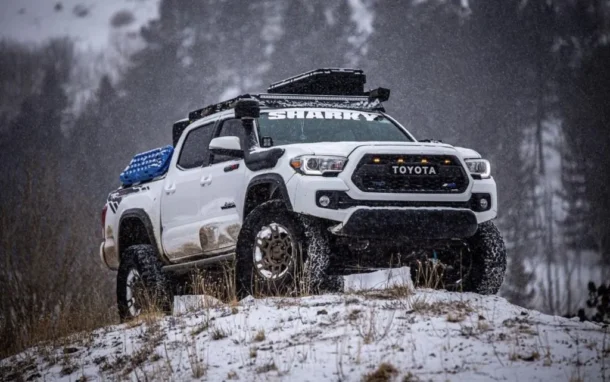
Source: trailtacoma.com
Off-road tires designed for water crossings have unique features to enhance buoyancy, grip, and self-cleaning properties. They typically have broader tread patterns with deep grooves and sipes that help channel water away from the tire’s contact patch, ensuring maximum grip on wet surfaces.
Additionally, specialized rubber compounds and construction techniques resist punctures and maintain tire integrity in soggy conditions. It ensures optimal traction even in the slipperiest of conditions, providing you with the confidence to navigate through water crossings with ease.
Selecting the appropriate set of off-road tires for water crossings involves considering factors such as tire size, tread pattern, and the specific conditions you anticipate encountering. Consulting with experts or fellow off-roaders and researching reputable tire brands known for their water-crossing capabilities will help you make an informed decision.
Communication Tools for Emergency Situations
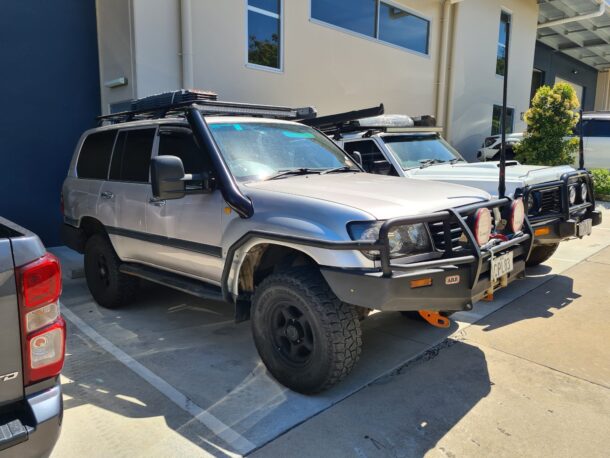
Source: mytuff4x4.com.au
When venturing into remote or rugged terrains, reliable communication is integral. Whether it’s a medical situation, a vehicle breakdown, or unexpected natural elements, calling for help or relaying critical information can make all the difference in the situation’s outcome.
Here are common types of communication tools:
- Two-Way Radios: These are indispensable for maintaining communication within your off-roading party. They work without the need for cellular reception and cover distances often beyond the reach of cell phones.
- Satellite Phones: In truly remote areas where conventional cellular coverage is non-existent, satellite phones serve as a lifeline. They rely on satellites orbiting the Earth to establish a connection, ensuring you can communicate regardless of your location.
- Emergency Locator Beacons: These devices, such as Personal Locator Beacons (PLBs) or Satellite Messengers, allow you to send distress signals and your GPS coordinates to emergency services, even in the most isolated environments.
- Cellular Signal Boosters: In areas with weak or spotty cellular coverage, signal boosters can amplify the signal, potentially enabling you to establish a connection where it might otherwise be impossible.
Having the right communication tools is only part of the equation. It’s crucial to be well-versed in their operation, including setting frequencies, sending distress signals, and understanding their range limitations.
Regular testing and familiarization with these tools ensure you can deploy them effectively in an emergency.
Furthermore, most communication devices rely on batteries, so carrying extra power sources, such as spare batteries, portable chargers, or solar-powered chargers, is essential. Ensuring your communication tools are adequately powered at all times is vital for their reliability in emergencies.
Final Thoughts
Safety should always be the cornerstone of any off-roading adventure. Properly equipping your 4×4 with the essential gear for safe water crossing is not just a matter of convenience but a critical step towards protecting yourself, your passengers, and your vehicle.

